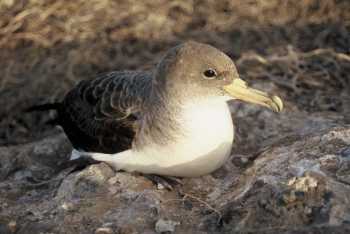BirdLife International’s Global Species Programme collates information on globally threatened birds from the published literature and from a worldwide network of experts. This is used to evaluate the status of each species using the IUCN Red List categories and criteria.
“New information on the population or range size and trends of a species, or the threats impacting it, may indicate that a species warrants uplisting or downlisting to higher or lower categories of threat. In such cases, BirdLife’s web-based Globally Threatened Bird Forums are used to advertise the proposed change and to solicit relevant information or comment from a wide network of experts and organisations."
The Globally Threatened Seabird Forum is currently considering implications arising from recent taxonomic splits of shearwaters as summarized below.
BirdLife’s taxonomic treatment of the Little Shearwater Puffinus assimilis/Audubon’s Shearwater P. lherminieri complex is being revised to reflect improved understanding of their taxonomy, and the recently described Bryan’s Shearwater P. bryani is to be recognised as a species. Audubon’s and Little Shearwaters will be provisionally listed as of Least Concern in the 2014 Red List update, whereas Bryan’s Shearwater will likely be listed as Data Deficient.
Click here for the full arrangement proposed to be adopted by BirdLife for taxa in this complex of 11 species of small shearwaters.
BirdLife is also proposing to split Cory’s Shearwater Calonectris diomedea sensu lato (a proposed candidate for ACAP listing) into Scopoli’s Shearwater C. diomedea of the Mediterranean and Cory’s Shearwater C. borealis of the Macaronesian Islands. Both species will likely be listed as of Least Concern in the 2014 Red List update (click here).
The initial deadline for comments on these changes is 7 April 2014. However, discussions on Audubon’s Shearwater and the Calonectris split will remain open until at least February 2015.
Click here for earlier ACAP Latest News accounts for the recently described Bryan’s Shearwater.

Cory's Shearwater, photograph by Paulo Catry
John Cooper, ACAP Information Officer, 13 March 2014

 English
English  Français
Français  Español
Español